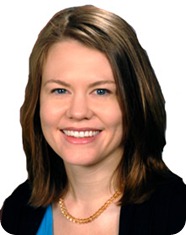
Please could you give a brief introduction to adolescent and young adult cancers? How many people do adolescent and young adult cancers affect?
According to the National Cancer Institute, almost 70,000 people ages 15-39 are diagnosed with cancer each year in the United States. Cancers in this adolescent and young adult (AYA) population differ quite a bit across this age span.
We typically see lymphomas, leukemia and germ cell tumors for those in their teens to early 20s. For older AYAs, epithelial cancers become more common, so cancers such as breast cancer, cervical cancer, or thyroid cancer.
What kind of routine medical care is needed for these conditions? How important is regular health care to monitor for late effects?
Because of the treatments AYAs receive for their cancer, many may be at risk for late effects – that is chronic health problems – that can emerge for years after they are done with their cancer treatment. Often these are conditions that you wouldn’t expect in younger people, so providers may not know to screen for these health problems.
Even for insured survivors, co-pays and other costs, such as taking time off work, can be hard for them financially. So for this population, they may not be catching these health problems early due to cost barriers, which could lead to higher cost care later on.
It’s important for AYA cancer survivors to discuss their cancer history and treatment with their health care providers so they can be appropriately monitored for health problems.
Your recent research found that many adolescent and young cancer survivors avoid routine medical care because it's too expensive, despite the fact that most have health insurance. Why do you think this is the case?
In our study, we weren’t able to specifically describe what type of care the AYA survivors said they were foregoing due to costs. The dataset we examined had a general question about whether an individual had not accessed medical care in the past year due to cost barriers. However, for survivors who have a lot of health problems, or who are uninsured or underinsured, getting regular, routine health care could be financially difficult because of high out of pocket costs.
Also, adolescence and young adulthood are periods of a lot of change – people move out of their parents’ homes, may be in school, have young families, and many don’t have jobs that offer them health insurance coverage. So a cancer diagnosis during this time can be very hard financially for an AYA cancer patient, and lead to later problems in accessing general medical care even several years after their cancer treatment.
What impact do you think your research will have? And do you have any plans for further research into this area?
The main impact for this current study is it has increased our awareness of the medical cost burden younger cancer survivors face. I think it’s important to raise awareness for both AYA cancer survivors and providers. Physicians may not be aware that someone who had cancer at a young age may be at risk for health problems.
In future studies, we need to get more detailed information on what types of care AYA cancer survivors may be avoiding, and what other sort of financial burdens – such as time off work to see the doctor – may be affecting their use of health care. Knowing this information can help researchers and providers figure out ways to help AYA survivors.
How do you think more adolescent and young cancer survivors can overcome cost barriers attached to routine medical care?
For AYAs who had cancer, hopefully more of them are able to access health insurance coverage now that the Affordable Care Act extends parental coverage for those under age 26, or may now have access to state plans that offer coverage for those with pre-existing conditions.
Additionally, getting in with a regular doctor, talking about your cancer history and treatment, and making sure you’re being followed before problems emerge is an important step, hopefully decreasing costs through prevention or early detection of problems.
Patients should also talk with their cancer doctors to get a summary of their cancer treatment – that way, their current doctors know what health conditions to look for based on their cancer.
Where can readers find more information?
Dr. Jennifer Wright, co-author, runs our Pediatric Cancer Late Effects Clinic: http://www.huntsmancancer.org/patient-care/clinics-and-programs/wellness-survivorship-center/pediatric-cancer-late-effects-clinic
About Anne Kirchhoff
 Anne Kirchhoff, PhD, MPH, is an assistant professor of pediatrics at the University of Utah School of Medicine and an Huntsman Cancer Institute (HCI) investigator. She is a member of the Cancer Control and Population Sciences Research Program at HCI.
Anne Kirchhoff, PhD, MPH, is an assistant professor of pediatrics at the University of Utah School of Medicine and an Huntsman Cancer Institute (HCI) investigator. She is a member of the Cancer Control and Population Sciences Research Program at HCI.
Kirchhoff investigates the social and financial consequences of cancer, primarily in adult survivors of childhood cancer.
Kirchhoff received her PhD from the University of Washington School of Public Health in Seattle. She earned her bachelor’s degree from Tulane University and her MPH from the Saint Louis University School of Public Health.